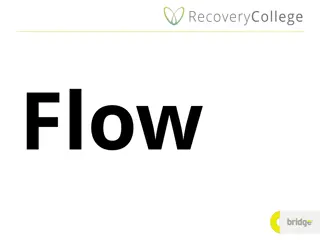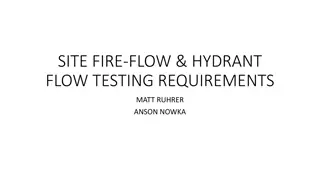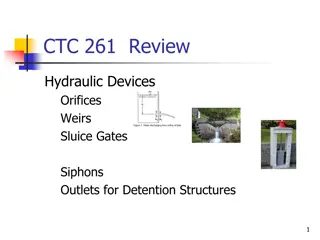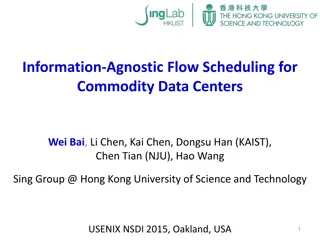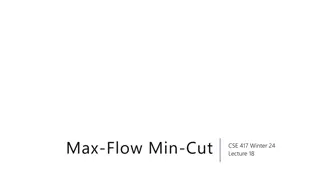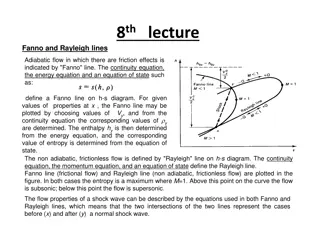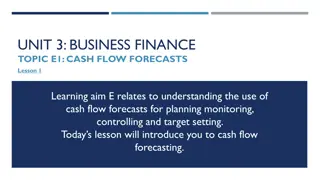
PME 2016 Framework for Discussing Teaching by Peter Liljedahl
Explore the PME 2016 framework for discussing teaching by Peter Liljedahl. Discover the optimal experience, flow, anxiety, boredom, and engagement in the teaching process. Delve into the elements that contribute to a satisfying and engaging teaching experience.
Download Presentation

Please find below an Image/Link to download the presentation.
The content on the website is provided AS IS for your information and personal use only. It may not be sold, licensed, or shared on other websites without obtaining consent from the author. If you encounter any issues during the download, it is possible that the publisher has removed the file from their server.
You are allowed to download the files provided on this website for personal or commercial use, subject to the condition that they are used lawfully. All files are the property of their respective owners.
The content on the website is provided AS IS for your information and personal use only. It may not be sold, licensed, or shared on other websites without obtaining consent from the author.
E N D
Presentation Transcript
PME 2016 FLOW: A FRAMEWORK FOR DISCUSSING TEACHING - Peter Liljedahl
PME 2016 www.peterliljedahl.com/presentations @pgliljedahl
PME 2016 THE OPTIMAL EXPERIENCE MIHALY CS KSZENTMIH LYI
PME 2016 1. There are clear goals every step of the way. 2. There is immediate feedback on one s actions. 3. There is a balance between challenges and skills. 4. Attention is focused on one s actions. 5. Distractions are excluded from consciousness. 6. There is no worry of failure. 7. Self-consciousness disappears. 8. The sense of time becomes distorted. 9. The activity becomes satisfying in its own right. - Cs kszentmih lyi (1990) OPTIMAL EXPERIENCE
PME 2016 1. There are clear goals every step of the way. 2. There is immediate feedback on one s actions. 3. There is a balance between challenges and skills. 4. Attention is focused on one s actions. 5. Distractions are excluded from consciousness. 6. There is no worry of failure. 7. Self-consciousness disappears. 8. The sense of time becomes distorted. 9. The activity becomes satisfying in its own right. - Cs kszentmih lyi (1990) OPTIMAL EXPERIENCE - internal
PME 2016 1. There are clear goals every step of the way. 2. There is immediate feedback on one s actions. 3. There is a balance between challenges and skills. 4. Attention is focused on one s actions. 5. Distractions are excluded from consciousness. 6. There is no worry of failure. 7. Self-consciousness disappears. 8. The sense of time becomes distorted. 9. The activity becomes satisfying in its own right. - Cs kszentmih lyi (1990) OPTIMAL EXPERIENCE - external
PME 2016 1. There are clear goals every step of the way. 2. There is immediate feedback on one s actions. 3. There is a balance between challenges and skills. ANXIETY BOREDOM OPTIMAL EXPERIENCE
PME 2016 1. There are clear goals every step of the way. 2. There is immediate feedback on one s actions. 3. There is a balance between challenges and skills. ANXIETY BOREDOM FLOW EXPERIENCE
PME 2016 1. There are clear goals every step of the way. 2. There is immediate feedback on one s actions. 3. There is a balance between challenges and skills. ANXIETY = ENGAGEMENT BOREDOM FLOW EXPERIENCE
PME 2016 ANXIETY BOREDOM FLOW EXPERIENCE
PME 2016 ANXIETY BOREDOM FLOW EXPERIENCE
PME 2016 ANXIETY BOREDOM FLOW EXPERIENCE
PME 2016 Can teachers classroom practice be described through the lens of flow? Can teachers classroom practice be prescribed through the lens of flow? RESEARCH QUESTIONS
PME 2016 Can teachers classroom practice be described through the lens of flow? set clear goals provide instant feedback maintain a balance between challenge and skill - Cs kszentmih lyi (1990) RESEARCH QUESTIONS
PME 2016 Purposive sampling effective mathematics teachers 15 teachers 6 participants Video of a typical lesson Claire has been teaching high school mathematics for 15 years teaches primarily the senior (grades 11 and 12) academic courses Connor has been teaching for 8 years teaches all levels of high school mathematics teaches some junior (grades 8 -10) science METHODOLOGY
PME 2016 CLAIRE
PME 2016 Claire's Lesson (grade 11) solving trigonometric ratio problems 00:00 Claire begins with a brief review of the previous lesson. 06:30 Claire delivers a 'lesson' on calculating the angle (0o < 360o) given a trigonometric ratio r. This lesson involves her giving several examples of how to solve such tasks. 22:00 Claire asks the class to solve for : sin = 0.8, cos = 0.32, and tan = 1.2. During this activity Claire circulates and checks on how students are doing. When a student puts up their hand she quickly moves to them and answers their question. The first two questions asked by students pertained to the fact that the ratio for the third question (tan = 1.2) is greater than 1. 26:15 Claire stops the activity to re-explain the limitations on the ratios for each trigonometric relationship. 31:00 Claire calls the class to attention and goes over the solutions to each of the three questions. 36:30 Claire gives the next question for the students to solve (solve for : 3sin + 1 = 2.8; 0o < 360o). Almost immediately many students put up their hands. Claire helps two students to understand the task and begin to solve it. 40:00 Claire calls the class to attention and reviews how to solve the equation 3x + 1 = 2.8. 42:30 Claire refocuses the students on the original task: 3sin + 1 = 2.8. 50:00 Claire calls the class to attention and goes over the solutions to the question. 55:30 Claire assigns homework. CLAIRE
PME 2016 Liljedahl, P. (2016). Building thinking classrooms: Conditions for problem solving. In P. Felmer, J. Kilpatrick, & E. Pekhonen (eds.), Posing and Solving Mathematical Problems: Advances and New Perspectives. (pp. 361-386). New York, NY: Springer. Liljedahl, P. (2014). The affordances of using visibly random groups in a mathematics classroom. In Y. Li, E. Silver, & S. Li (eds.), Transforming Mathematics Instruction: Multiple Approaches and Practices. (pp. 127-144). New York, NY: Springer. CONNOR
PME 2016 Connor's Lesson (grade 11) factoring quadratics 00:00 Connor reviews how to multiply two first degree binomials on the board: (x + 2)(x + 3) = x2 + 5x + 6. He then asks the question, "what do the binomials have to be if the answer is x2 + 7x + 6?" 01:30 Connor places the students into random groups and asks them to work on vertical whiteboards to find the answer. He then begins to circulate amongst the groups as they begin to work. 05:00 Connor stops to speak with a group who is having trouble understanding the task. He re-writes the example as follows: (x + 2)(x + 3) = x2 + 5x + 6 (?)(?) = x2 + 7x + 6 He then points to the question marks and asks, "what has to go in here so that the product of the two binomials is this (pointing at the quadratic expression)? I'll give you a hint look at the last number." 07:00 Connor asks a group who has an answer to check their solution by multiplying the binomials. Once the solution is confirmed he gives the group a new task: x2 + 6x + 8. 08:30 Connor gives a new task to two groups asking them first to check their answer. 09:00 For the next 32 minutes Connor moves around the room giving new tasks and helping groups that are stuck. Eventually Connor projects a list of 20 progressively challenging tasks onto a wall. These range from the initial task of x2 + 7x + 6 to tasks as complex as 6x2 + 10x - 4. The groups start to move through these tasks one by one solving each and checking their answers. 41:00 Connor gathers the students around one whiteboard and asks them to walk him through how to solve the question x2 + 5x 24. Connor forces the students to articulate their thinking at each step. 47:00 Connor suggests that the students sit down and write down some notes for themselves. 52:00 Connor projects five more tasks on the wall and asks the students to solve them on their own. CONNOR
PME 2016 CLAIR demonstrating how to solve several similar tasks faced with students that are not clear about tan = 1.2 (1.2 > 1) choses to deal with this by addressing the class as a whole Claire poses the next task (3sin + 1 = 2.8) to whole class she is again faced with students who are not clear what the goal of the activity is she again pulls the whole class together to further explain the task and she offers 3x + 1 = 2.8 CONNOR Connor begins lesson by reviewing how to multiply binomials asks the students to find the two binomials if given the resultant quadratic Connor is faced with groups who do not understand the goal of the activity he deals with these situations one by one (works with four groups) has no further issues with groups not understanding what the goal of the activity is PROVIDING CLEAR GOALS
PME 2016 CLAIR Claire's primary method for providing feedback is whole class recitation at the end of every activity during the activity she spends her time helping individual students who are stuck or confused during this time she will occasionally acknowledge correct solutions and when she encounters a student with an incorrect solution she works with them one-on-one to solve the task correctly CONNOR at the beginning Connor is providing feedback on student solutions in much the same way as Claire did acknowledging correct solutions and working with groups who are struggling Connor very quickly shows the students how they can check their own solutions by multiplying the binomials that they obtained he established a way for the groups to get instant feedback on their actions. PROVIDING FEEDBACK
PME 2016 CLAIR in the first activity the challenge of the tasks is reduced for the whole class through the explicit lesson on, and examples of, how to solve these types of tasks Clair then lowers the challenge even further in the middle of the activity by reviewing the range of ratios possible everyone was given the second more challenging activity at the same time the challenge of this activity is then reduced for the whole class when Claire shows how to solve an analogous algebraic task CONNOR Connor regulates the challenge of each task according to the ability of each individual group groups who need help receive individualized help groups whose ability allows them to solve a task are given a more challenging task to work on eventually the groups are shown how to check their own solutions and from then on they are able to increase the challenge of the activity as their ability increases REGULATING CHALLENGE
PME 2016 ANXIETY BOREDOM CONNOR
PME 2016 ANXIETY BOREDOM CLAIR
PME 2016 CLAIR CONNOR TEACHER clear goals feedback regulating challenge TEACHER clear goals feedback regulating challenge STUDENTS clear goals feedback regulating challenge STUDENTS clear goals feedback regulating challenge DISCUSSION
PME 2016 CLAIR CONNOR TEACHER clear goals feedback regulating challenge TEACHER clear goals feedback regulating challenge STUDENTS clear goals feedback regulating challenge STUDENTS clear goals feedback regulating challenge DISCUSSION
PME 2016 THANK YOU! liljedahl@sfu.ca www.peterliljedahl.com/presentations @pgliljedahl


